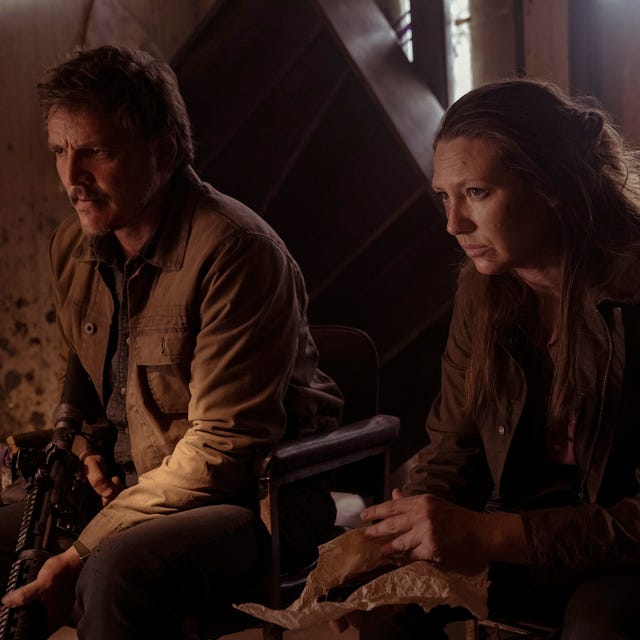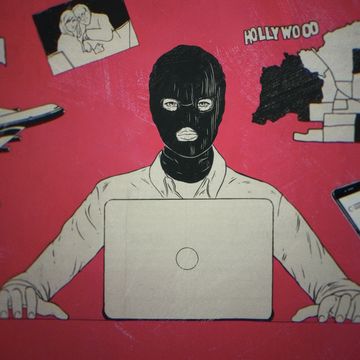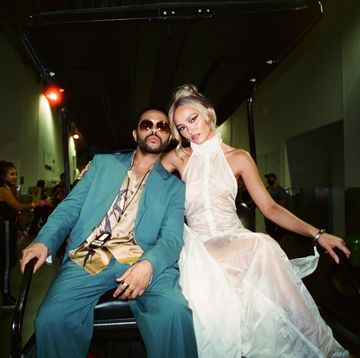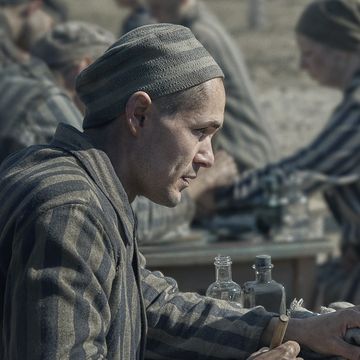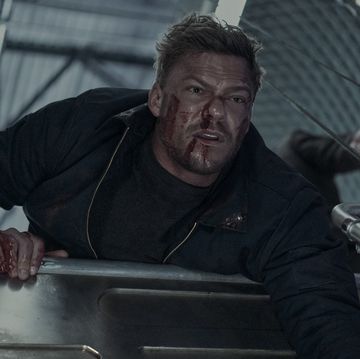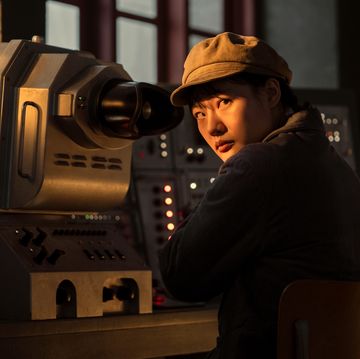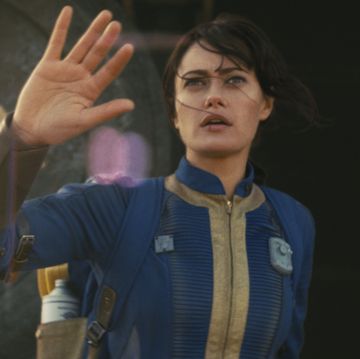The Last of Us begins its muted second episode, “Infected”, in Indonesia, where a professor of mycology has been summoned to examine a dead body. Except, of course, the body is now a home to the Cordyceps infection. No one has any idea what’s going on: it is pre-Outbreak Day. Suited and masked up, the professor finds stems growing inside the corpse’s throat. They emerge, queasily, like a magician’s never-ending handkerchief. Outside, over a cup of tea, we learn a little more about the case: she was a factory worker who attacked four colleagues, before being locked in a bathroom and shot dead by police. The authorities have called the professor to work out what can be done to halt the spread of whatever-the-hell-this-is. There is no vaccine, there is no medicine, the professor grimly announces. The only solution? Start bombing.
Back in the off-limits, open city streets of Boston, Joel (played by Pedro Pascal), Tess (Anna Torv, a gruff highlight) and Ellie (Bella Ramsey) are continuing their quest. After the revelation that Ellie has been bitten, the adults are understandably suspicious. But she hasn’t displayed any symptoms yet, and besides, they really want that car battery (Joel is determined to reunite with his brother, Tommy). Ellie offers reassurance by way of explanation. There’s a Firefly base camp out west, with doctors working on a cure. Her apparent immunity could be key to developing a vaccine. That’s why Marlene (Merle Dandridge) had placed so much importance on the 14-year-old’s shoulders. Though Joel remains suspicious, Tess urges the group to press ahead. The tension between former’s cynicism and the latter’s cautious optimism drives this episode.
The state house, their destination, is only about a ten-minute walk away. The short way, though, is a little more like the “we’re fucking dead way” according to Tess, so they take the long route, good for their safety as well as exposition. Ellie has never seen the city before, a stranger to its collapsed skyscrapers and destroyed car parks. As foreshadowed in the prologue, most cities were bombed to slow the infection, but while it worked in Boston, it didn’t in many places.
We learn that Ellie was bitten in a solo trip to an off-limits shopping mall (“You’ve got some balls on you, sister,” says Tess), that she is an orphan (with no boyfriend), that she can’t swim (there were no pools in the quarantine zone). We learn that Tess is from Detroit, that she once had the (unrequited) hots for Joel. We learn more about the infected – how some wander about for months but others last for years. We discover all this as they walk through the streets, as they wait in the corridor of an abandoned hotel, as they travel through their increasingly-compromised route. This episode, which muses on the importance of faith, has a slower, more appealing tone than the debut. It might strike some as a come-down from last week’s explosive opener, but the change of pace allowed some of these characters to breathe.
The fallen city is impressive: intricately-constructed bomb craters, verdant crashed cars, moss-covered restaurant tables. The hotel, with its submerged lobby and lily pads, is more evocative still (though that jump-scare skeleton at the front desk is a little children’s Hallowe’en party). In fact, it’s so well put together that it’s occasionally jarring; the sets resemble an especially well-polished Warhammer set. But at least the designers are not compromising on the game’s vision.
Intriguingly, The Last of Us transforms the more boring tropes of a TV apocalypse – flashbacks to a former world, for example – into some of the show’s most intriguing elements. The zombies, normally quite dull antagonists, work here: staggering in a swarm on the side of a building, stalking dusty museum corridors with heads exploding into fungus. It’s possible to get a little too side-tracked in undead lore – occasionally I find myself googling very pointless things like, “are all zombies blind?” – but The Last of Us knows when, and where, to wheel these monsters out. That they are an ever-growing mass, likely to take over the entire city one day, only adds to the impending doom.
After the museum chase, Tess is nursing a twisted angle as well as something more sinister: a zombie bite. It colours the entire last sequence, in which they find the troop of Fireflies dead, with a desperate urgency. She urges Joel and Ellie to go ahead, and tries to instil hope in the former about the latter’s potential for the universe. Kicking down the explosive barrels – such a videogame cliché that it threatens to take you out of show in these climactic moments – Tess prepares the lobby to stop the infected crowds. As she struggles to spark her lighter, an infected begins to kiss her, sharing fungus shoots not saliva. It’s chilling, thrilling, easily the show’s best scene so far, but more than a little bittersweet, as it’s unlikely we’ll see much more of Anna Torv. The show, solid but curiously nondescript, could use her singular presence.
‘The Last of Us’ airs weekly on Sky Atlantic and NOWTV
Henry Wong is a senior culture writer at Esquire, working across digital and print. He covers film, television, books, and art for the magazine, and also writes profiles.
